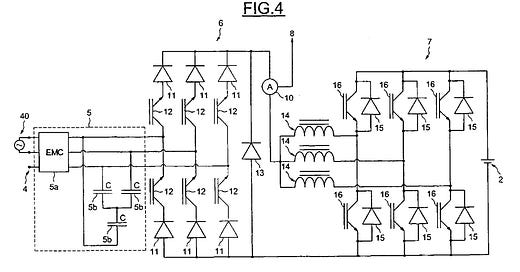👋 Hello Supergineers! Dr. Molina here! 👨🔧
FUN FACT: The Latin words ingeniare ("to produce, generate, concoct, devise") and ingenium ("cleverness") are combined to form the term engineer. So a ‘supergineer’ is basically a super clever generator. Nice one yeah?
You know, as engineers, we learn and discover new things every day, from everywhere. We’re always on our toes testing systems, researching, devising; and it was in the course of doing this that I stumbled on today’s subject.
So, I recently watched a YouTube video about a nifty charger. It's called the Renault Zoe patent, and once again I'm reminded of this saying from the Spanish journalist, Pack Umbral.
“Simplicity is a complexity solved.”
You might be wondering, “What has this got to do with the charger, Chema?” “What's so special about it? ”. Well, It’s not the charger that’s special per se but the concept behind it.
Check this out;
Serge Loudot, the author of this patent (US20120286740A1) from Renault, decided to use a single inductor for two purposes.
Coincidentally, I worked on a similar concept for my Ph.D. thesis. Now, you can imagine how I felt when I discovered something similar to what I had done existed. One word; BLOWN! Indeed, great minds do think alike.
In my thesis (see picture below), I have a 3 phase active buck rectifier, and I used the output inductor as the inductor of a current fed full bridge, avoiding the output inductor of the system.
And the patented circuit (Figure 2) uses the output inductor of the Buck type rectifier as the inductor of the boost converter that follows. It’s the same concept published by M. Baumann, but with a single boost output instead of 3 phases that I had in My Ph.D. thesis.
But what had me most excited is what the inductor in question is. They used the motor as an inductor! Component 14 is, in reality, the motor of the car!!
What a fantastic way to cut costs if you ask me.
I guess I can go on and on about what makes this patent particularly interesting to me, but I promise I won’t be biased. As much as I loved it, the only drawback was the lack of isolation. Besides that, it’s an A+ in my books.
In summary, it doesn’t have to be complex if we can actually resolve it into simpler expressions without compromising the original idea it began as. I loved discovering this patent, and I wanted to share it with you 🥳.
I hope you enjoyed this Newsletter and it brings you new ideas.
PS: There is so much I still want to share with you. And even more, I’ll be sharing in the next Training of Frenetics. So, if you want to boost your expertise in Power Electronics and Magnetics or be part of the Super Engineers to design the next Renault Zoe, I recommend you book a seat. You never know, your idea might be the next big thing.
🚘 To become an engineer with Super Powers 🦸🏼♀️ 🦸♂️, just follow this link.
[1] M. Baumann, U. Drofenik and J. W. Kolar, "New wide input voltage range three-phase unity power factor rectifier formed by integration of a three-switch buck-derived front-end and a DC/DC boost converter output stage," INTELEC. Twenty-Second International Telecommunications Energy Conference (Cat. No.00CH37131), 2000, pp. 461-470, doi: 10.1109/INTLEC.2000.884290.







I think Alan Cocconi of AC Propulsion had a patent on this for many years. Very important to be mindful of the possibility of generating magnetomotive force vectors in the motor that could move the vehicle during charging! An interlock method should be employed to ensure the motor cannot move during charging.
Indeed, in 3phase AC motors normally the reluctancies of the motor windings can be eventually used instead external output inductor filters in the converter…